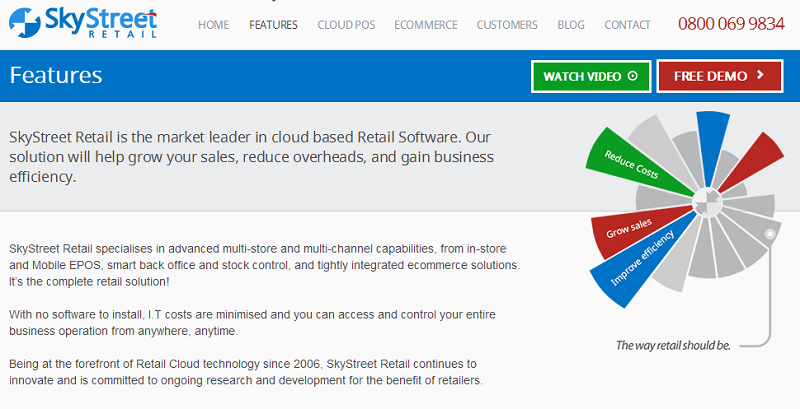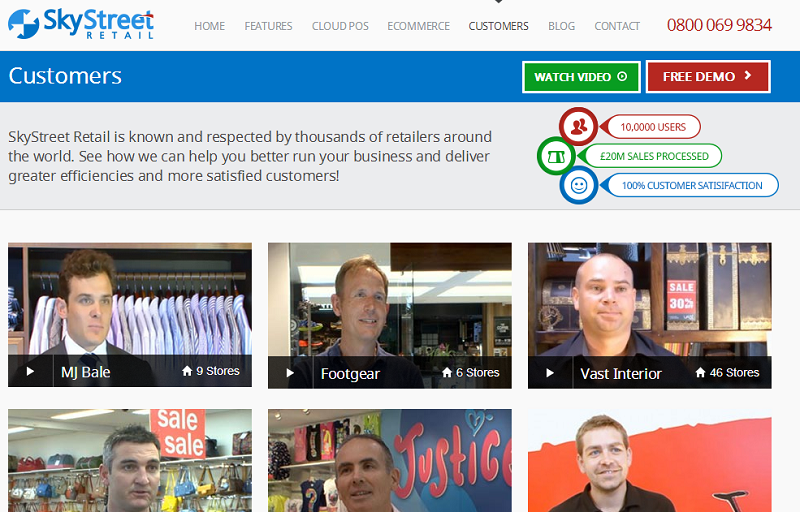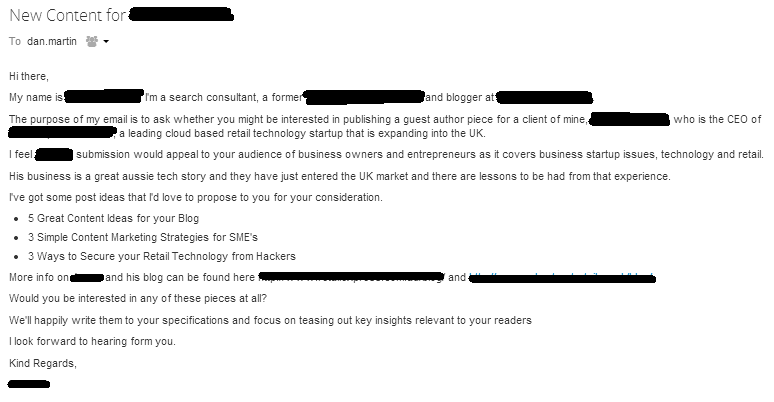by Venchito Tampon Jr | Last Updated on October 24, 2021
Aside from being the most common link building tactic (as stated in the last year’s link building survey on Moz), guest blogging serves as a traffic generator that continually brings targeted visitors to a certain website which can help the brand grow a small but engaging community.
The main key to generate targeted traffic, leads and sales through guest blogging is the use of personas. With persona in mind, third-party content (guest posts) are more appealing to its audience given that the value/information provided by the content appeals to the deepest needs and/or pains of a specific group of people.
In this post, I’ll be discussing how to create and use personas in guest blogging to maximize every effort and time devoted to writing and distributing the content.
How to Create a Persona
In user-centered design and marketing, personas are fictional characters created to represent the different user types that might use a site, brand, or product in a similar way. This is essential in capturing attention from a specific group of people given that the interest, need and/or pain is identified, solved or attended by the content piece.
The first initiative in creating a persona is to identify the audience that the business wants to engage with. This may be the direct customers and/or those people that would help promote the business online.
To identify the direct customers/clients, you could simply get an idea from the unique selling point or features of your product/service. So for instance, if you’re selling an online point of sale (POS) system, your direct customers could be product retailers and ecommerce site owners.
Features
Customers
To identify your brand evangelists, you can look at those people who’ve shared your content in the past or if you’re new in the business, you can reverse engineer on your competitors’ social profiles. See the descriptions of those social followers and determine their niches.
Once you have identified your target audience (whether it is your direct customers or brand evangelists), you can now create a persona by adding important details such as:
- Name
- Age
- Location
- Job Title
- Interest
- Needs
You can create a cartoon to get a visual look of your persona.
How to Guest Blog like A Pro
Prospecting
Like any other link building techniques, guest blogging starts with the right link prospecting.
When prospecting for blog targets, you only want to find relevant blogs (where your audience is engaging) and have high potentials of bringing to your site a consistent traffic once you landed guest posts on them.
In terms of relevancy, there are three prospecting categories that I usually follow in guest blogging: horizontal, vertical and local-centric. These categories are based on relevancy and geographic locations.
Here are three diagrams to explain each category:
(Let’s take sports insurance as our niche example).
Horizontal Category
Vertical Category
Local Centric
 When you determined the category of your choice, you can now proceed to finding relevant and high quality blogs. Here are some tips in looking for high quality niche-specific blogs:
When you determined the category of your choice, you can now proceed to finding relevant and high quality blogs. Here are some tips in looking for high quality niche-specific blogs:
- Use author footprints to discover guest contributions written by an industry blogger. If the blogger is highly influential, chances are those guest blogs where he had contributed his posts have strong readerships and solid blog communities. You can try using Buzzsumo to find guest articles of an influential blogger.
- Maximize the power of directories by using it to search for high quality blogs from horizontal and vertical categories of your industry. Blogs listed in directories like Dmoz are said to be of high quality given that those kinds of directorieshave strict guidelines in listing websites.
- Utilize contributor queries in prospecting for guest blogs instead of using generic search queries such as inurl:submit a post [industry] or “write for us” [industry]. Here are a few queries that you can add to your prospecting query list:
“become a contributor” [industry]
inurl:contributors [industry]
To discover more guest blogging opportunities using free tools, you can check out this post on Raventools.
Qualification
Qualifying your list of blog targets could help you save time for outreach, remove irrelevant and low quality blogs and prioritize targets based on available quality indicators.
There are several metrics in link qualification but a few of them is enough to determine the site’s authority, readership size and search potential. Remember that relevancy isn’t a quality indicator here given that it has already been applied to the prospecting phase.
Guest blog quality indicators:
- Domain authority – use Mozbar to identify the site’s DA.
- Engagement – see the comment section (an average of 5 comments is a green signal).
- Social shares – 100+ authentic social shares could further promote your guest post to a wider audience.
- Readership size (optional) – There is no definite way to track the number of average readers for each blog post. However, some blogs show the number of their email subscribers on their opt-in forms which could give you an idea of the site’s readership size.
When you have separated the wheat from the chaff, it is time to list all the industry-relevant, high quality and engaging guest blogs in a spreadsheet. Fill in some important details of each blog target by adding other columns for the following:
- Blog Name – self explanatory
- Categories – add categories that best describe the niche of your target audience
- Sample Blog Post (1) – relevant guest contributions of other bloggers
- Sample Blog Post (2)
- Topic Suggestion (1) – provide three topic ideas and let the content manager choose one.
- Topic Suggestion (2)
- Topic Suggestion (3)
- Name – find the name of the content manager/blog manager/editor
- Position – his/her position
- Email address – read these several posts about finding email addresses.
- Twitter profile (optional) – either of the brand or of the person who handles the content.
- Regular Contribution (Yes/No) – if the content manager allows you to become a regular contributor of their blog, then write “yes” in the column. Otherwise, you write “no” which means that you can only write one-time post on their blog.
- Relationship Stage – This column allows you to track the stages of your guest blogging pitches. Stages are Initial Contact, Draft, Submitted, Published.
Complete all the important details listed above and start performing your initial outreach.
Initial Outreach
The primary goal of this phase is to spark a conversation with the content manager. Once you secure a positive response from him, it would be easy for you to place a guest piece on his blog.
Write an email copy that is straightforward and that includes topic suggestions to let the content manager choose one and become the topic of your guest article for the blog.
For outreach specialists:
Hey [Name],
I know you’re the [Position] at [Blog Name] and I wanted to get in touch.
I am looking to write about one of the following topics:
- [Topic Suggestion 1]
- [Topic Suggestion 2]
- [Topic Suggestion 3]
What do you think about this? If you’re interested, I am happy to get something written up and sent over to you – or if you have another topic you’d like to see covered, I am more than happy to write on that.
Here are some of my posts I’ve written on other blogs:
[Sample Blog Post 1]
[Sample Blog Post 2]
Thanks,
[Your Name]
For agency marketers:
Tips to create a better email copy for guest blogging:
- Start your email copy with an introduction to yourself and to the brand you’re representing.
- Propose topic suggestions instead of sending the content manager a ready-made article unless the guest blogging guidelines say so. Letting him/her choose a topic idea could signify your concern to the usefulness of the guest article to their readers.
- Provide previous guest articles that are related to the blog target you’re pitching to prove the value your writings could provide for their users.
If in case the content manager didn’t respond to your email, an alternative way to pitch is through Twitter outreach. Conversations will not be continued on Twitter but rather it is only a way to let him send to you the right email address.
Hi @prontomarketing I’d like to pitch a new guest post for your blog. Which email should I send it to?
— Venchito Tampon Jr. (@venchito14) April 11, 2014
You can check out my post on building solid relationships through link building outreach.
Content Creation
Content creation seems to be complicated for some link builders given that it will require continuous experiments to be able to see better results for the whole content marketing campaign. This is quite true, but in reality, the crucial is the right targeting of your audience and writing guest articles that best suit the needs and pains of the persona.
The combination of constant practice and right execution is the key to a successful content creation.
When crafting guest posts, the following elements are highly considered:
- Preferred topic idea of the content manager
- Level of audience (beginners, intermediate, advanced)
- Type of audience (e.g. retailers, suppliers)
- Type of content (tutorial, list type, trends)
If regular contribution request is accepted, you could focus your guest articles on one specific niche to emphasize your niche expertise and to slowly build a brand around that sub-niche.
Other tips when writing guest articles:
- Surround the links pointing to your site with call-to-actions and relevant terms/keywords.
- Link to your site’s categories and related blog posts to increase the chances of getting them found by new readers.
- Combine low, medium and highly competitive keywords to come up with a powerful long tail keyword that you can target for your guest posts.
If you do that, you’ll have chances of ranking your guest posts for desired keywords.
Other Resources:
- Creating and Developing Content Assets Like A Pro
- Developing a Content Strategy like a Fortune 500 Brand
- The Definitive Guide to Guest Blogging
If you’re looking for a high quality link building service, then you can contact our team to help you create a link strategy that fits your brand and industry.
The Author
Venchito Tampon Jr
Venchito Tampon is a Filipino Motivational Speaker, Corporate Trainer, and a Leadership Speaker in the Philippines. He is the CEO and Co-Founder of SharpRocket, a link building agency. With a decade of experience, Venchito has a proven track record of leading hundreds of successful SEO (link builidng) campaigns across competitive industries like finance, B2B, legal, and SaaS. His expert advice as a link building expert has been featured in renowned publications such as Semrush, Ahrefs, Huffington Post and Forbes. He is also an international SEO spoken and has delivered talks in SEO Zraz, Asia Pacific Affiliate Summit in Singapore, and Search Marketing Summit in Sydney, Australia. Check out his other businesses, Hills & Valleys Cafe, Blend N Sips and Saas Pursuit.
How our LINK BUILDING AGENCY builds 250 links/mo consistently using Predictable Link Building Methodology™…
- Using a SIMPLE and PROVEN system
- Using a SCALABLE strategy
- No private blog networks
- No creepy outreach emails






